Facebook is a great equalizer for campaigns and can reach potential voters like no other medium. The good news about Facebook advertisements is that they’re so easy to do, any candidate can do it. The bad news is that they’re so easy to do, most candidates make mistakes. Facebook masks a lot of the complexity and eggs you on every time you log in, trying to get you to “boost” your posts.
I’m not saying you shouldn’t advertise on Facebook and I’m not saying you need to become an advertising guru. But in this article, I’m going to share my top 7 pet peeves I see every day. If you can avoid making these mistakes, you will get a lot more bang for your advertising buck.
 Mistake #1: Giving Away Traffic
Mistake #1: Giving Away Traffic
Let’s say you just had a favorable article written about you in the local paper. They published an opinion editorial supporting your campaign’s platform. That’s great! I’ve seen countless candidates share the link to that article on their Facebook page and then “boost” the post to let everyone know about the editorial.
What’s wrong with that?
You’re paying your own money to send traffic to someone else’s website! It’s true that you’ll gain some benefit from people reading the article but you are giving away two important advantages:
- Shape the message. No matter how positive the coverage, you’re missing an opportunity to put the article into a larger context and include your campaign’s messaging. Consistent messaging is very important to your campaign’s success.
- Call to action. There’s no way for people to donate to your campaign or sign up for your newsletter or volunteer on the newspaper’s website. It’s highly unlikely that they will read the article or watch the video and then take it upon themselves to find your website and take action.
What should you do instead?
Write up an article on your own website that quotes the most relevant portions of the story. You can include links in the body of your post to the original article if people want to read or watch it in full. In the meantime, voters and constituents are spending time on your website, sharing it on social media, responding to your calls to action, etc. If you’re going to pay for clicks, make them count!
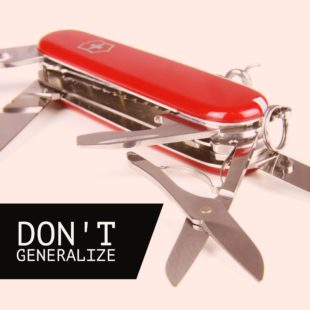 Mistake #2: Sending to Your Home Page
Mistake #2: Sending to Your Home Page
OK, so now we know that you shouldn’t pay to send traffic to other websites. So, does that mean you should send them to the home page on your website? No!
What’s wrong with that?
The page that visitors see after they click on your ad (we call that a “landing page”) needs to fulfill the promise that was made in the ad. For example, if your ad declares that you will fix education, the page they see better explain how that will happen. If it says you will lower taxes, they better see that answer. But your home page can’t contain all of these answers at the same time.
What to do instead.
The ad and landing page need to be a matched pair and they need to be as specific as possible. The more generic and boring your ad sounds, the less likely people will be to react to it. By definition, your home page needs to be fairly generic and will always do a poor job as a landing page.
Instead, create ads that describe how you will improve your constituents’ lives and then deliver on that promise on the landing page. Also, be sure to include a call to action on the page. The most common will be to ask for a donation, email list subscribe, yard sign, etc. The goal is to earn a return on your advertising investment. Some of that return will be in the form of name recognition but why not get all the bang for your buck that you can?
Mistake #3: Flying Blind
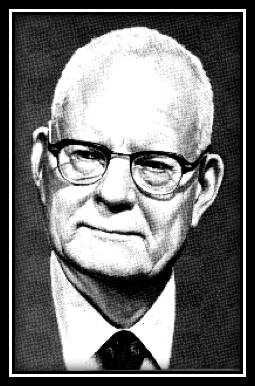 Edwards Deming was an engineer, statistician, and management consultant who is largely credited with Japan’s post-war economic miracle in the 1950’s. He promoted the philosophy that organizations could increase quality and simultaneously reduce costs. One of his more famous quotes applies to digital advertising:
Edwards Deming was an engineer, statistician, and management consultant who is largely credited with Japan’s post-war economic miracle in the 1950’s. He promoted the philosophy that organizations could increase quality and simultaneously reduce costs. One of his more famous quotes applies to digital advertising:
“In God we trust. All others bring data.”
If you’re spending hard-earned campaign funds on advertisements, don’t you want to know if they’re working? If you don’t have web analytics installed on your website, you’re flying blind.
What’s wrong with that?
The most obvious thing you’re sacrificing is understanding how well your ads are (or are not) working. By monitoring your analytics, you can see how much of your traffic is coming from search engines or paid ads or emails. You can also see what pages they visited on your site.
Which leads me to the second thing you’re sacrificing: Intelligence. By seeing which pages visitors read, you can get an idea of what issues are important to them. If you’re using the Facebook Pixel, you’ll get even more detailed information, including demographics, behaviors, interests, etc.
What to do instead.
There are two free tools you’ll want to utilize – Google Analytics and the Facebook pixel. Google Analytics tracks all the traffic on your website. It knows where it came from and what visitors did while they were there. The Facebook Pixel is similar but it offers some additional benefits because Facebook knows a whole lot more about the visitors on your website than Google does. It gives you a whole new layer of information you can use in your campaign. We’ll talk more about the Facebook Pixel – how to install it and what you can do with it – later in this document.
Mistake #4: Your Net’s Too Big
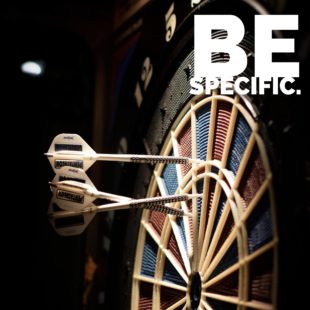 Your first instinct is going to be to configure your ads so that they reach the widest possible audience. At first blush, that makes sense. If you’re going to pay for an ad, you want to reach as many voters as you can.
Your first instinct is going to be to configure your ads so that they reach the widest possible audience. At first blush, that makes sense. If you’re going to pay for an ad, you want to reach as many voters as you can.
What’s wrong with that?
There are a couple of problems with that approach. First, you’re probably sacrificing quality for quantity. If your advertisement, for example, mentions that you are in favor of Right to Work legislation, does it make sense to show that ad to Democrats? Or would your money be better spent by targeting people more likely to support your stance? Perhaps your goal is to explain to Democrats why you support the legislation. But either way, it makes sense to narrow your audience and tailor your message to that audience.
The second reason is that a narrower audience will generally cost you less than a wider one. Both Google and Facebook operate under an auction format. That means you’re competing against lots of other interests (including for-profit companies) for the same eyeballs. The more specific you can be about your audience, the more competition you’re excluding.
What to do instead.
Create more targeted messages to smaller segments of your audience. There are four basic ways to do this targeting.
- Geography – Obviously, you’ll almost always want to limit your ads to within your voting district. Facebook allows you to include postal codes, which tends to be the best technique for local and state districts.
- Demographics – You can select age, gender, relationship, education, work, ethnicity, life events, languages and more. Even more applicable, Facebook allows you to target people based on their political persuasions (e.g. conservative vs. liberal, Republican vs. Democrat, donors, likely to engage, and more).
- Interests – Facebook allows you to target people based on their interests. They base this on many different factors, some of which are actions they take inside of Facebook in addition to websites they visit, purchases they make, etc. Some of the high level categories they offer include business and industry, entertainment, family and relationships, fitness and wellness, food and drink, hobbies and activities, shopping and fashion, sports and outdoors, and technology. There are hundreds if not thousands of sub-categories under each of those.
- Behaviors – Facebook also allows you to target people exhibiting certain types of behaviors. These categories include categories like charitable donations, job role, purchase behavior, residential profiles, travel, and more.
Mistake #5: Poor Visuals
 Too many advertisements either utilize poor quality images or none at all. Both are critical mistakes.
Too many advertisements either utilize poor quality images or none at all. Both are critical mistakes.
What’s wrong with that?
The human brain uses 20% of the body’s energy while accounting for just 2% of its mass – a whopping 900% premium. It generates 25 watts of power each day and demands 15% of the heart’s output. The average reader can comprehend 120 words per minute, taking nearly fourteen hours to read a typical novel (100k words) at a cost of almost 1,000 calories (or 4.2 kJ), 164 gallons of blood (or 622 liters) and nearly $300 in lost wages (theoretically for average U.S. wage earner at $21/hour).
In terms of energy, blood flow, and time, reading is very slow, expensive, and inefficient. That’s a long way of saying that we are visual creatures. Our brains are designed to remember and process images, especially faces.
What to do instead.
Make sure every ad you create includes a high-quality image that will stand out from the rest of the images on people’s timelines. Most candidates aren’t lucky enough to be blessed with great design skills but, fortunately, there are some free tools out there to help with that.
- Canva (canva.com) provides “amazingly simple graphic design software.”
- Pablo (buffer.com) is similar to Canva. It’s provided by a company called Buffer, which is a social media management tool that we highly recommend for campaigns.
- Adobe Spark (adobe.com) has both free and paid versions and works very much like the other tools mentioned.
Mistake #6: Paying for Likes
After you create a Facebook page for your campaign, they will be hounding you to promote your page to get more likes. They make it very easy to do.
What’s wrong with that?
Unless you’re very careful about how you craft your audience, most of the likes you’ll accumulate will be garbage, frankly. They typically won’t be people who will support you or engage with your page in the future. Also, it can get pretty expensive, relatively speaking. It’s not uncommon to pay more than $1 per page like, especially if you’re a novice advertiser.
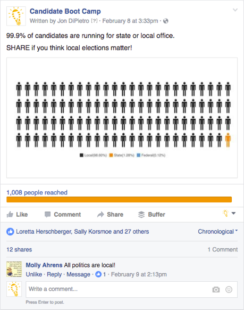 What to do instead.
What to do instead.
One of the fringe benefits of paid campaigns is that people can and will like your page directly from the advertisement. You can get likes in addition to clicks and other engagement.
The image to the right shows an example for a Facebook post we promoted for Candidate Boot Camp. It’s an image we posted and encouraged others to share. Within 48 hours, there were 29 likes and 12 shares of the image. Our page also gained two page likes.
All of these results cost us $0.27 per engagement, which is probably much less than we would have been charged for each successful page like.
Mistake #7: Talking About Yourself
Many businesses and most political candidates have a tendency to want to talk about themselves. They wish to communicate what they think is important for people to know. It’s understandable.
What’s wrong with that?
David Meerman Scott is an accomplished marketer, author, and professional speaker. One of his fundamental tenants of marketing is that “Nobody cares about your products (except you).”
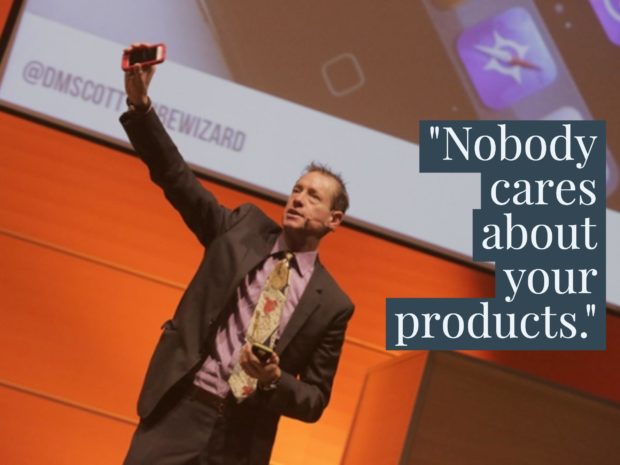
The same goes for your candidacy. Very few people outside of your friends, family, and volunteers truly care about you or your candidacy.
What to do instead.
What they do care about is how you can improve their lives and affect the change they wish to see. That’s what you need to focus on.
Here are some before and after examples of how to reframe messages from being about you to being about the voters:
| About You: | About Them: |
|---|---|
| I am a successful business entrepreneur. | I know how to create jobs for your family. |
| I support unions. | Help me protect workers against union-busting legislation. |
| I care about seniors. | I'll protect your fixed income by cutting property taxes. |
| I love the environment. | Let's grow the renewable energy industry in our state. |


Thank You